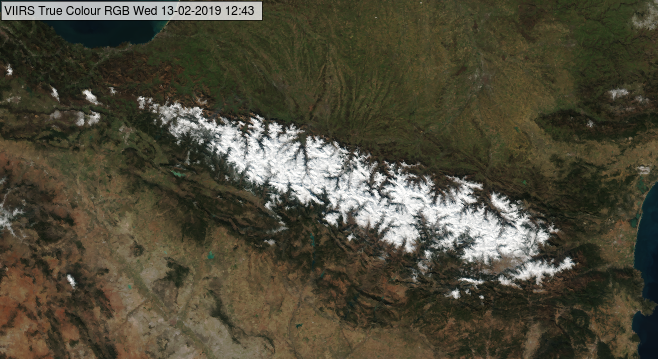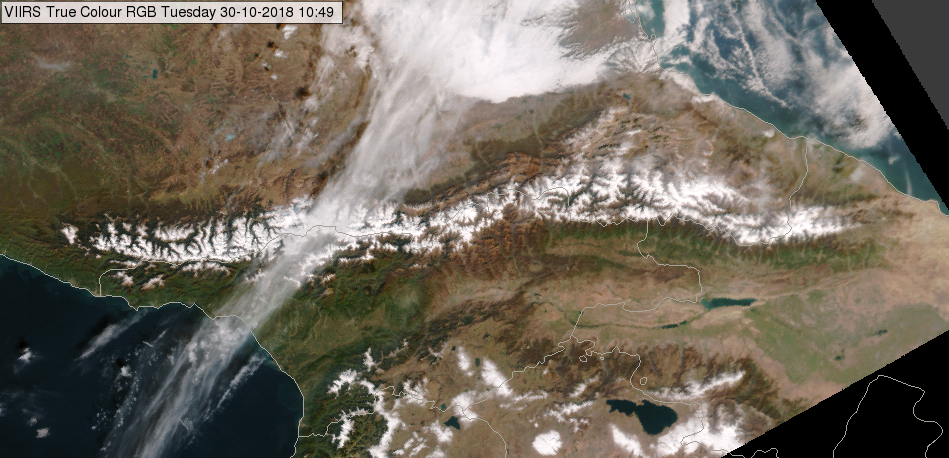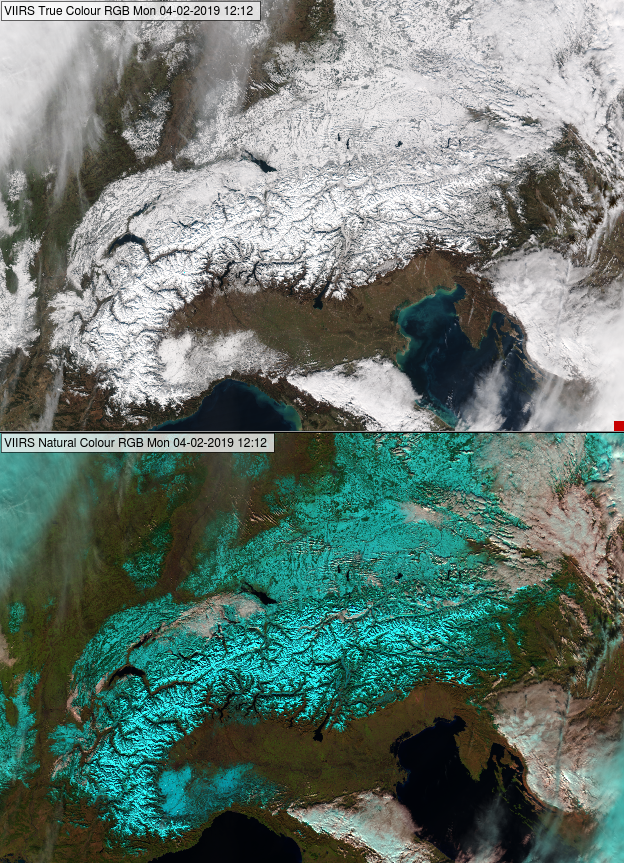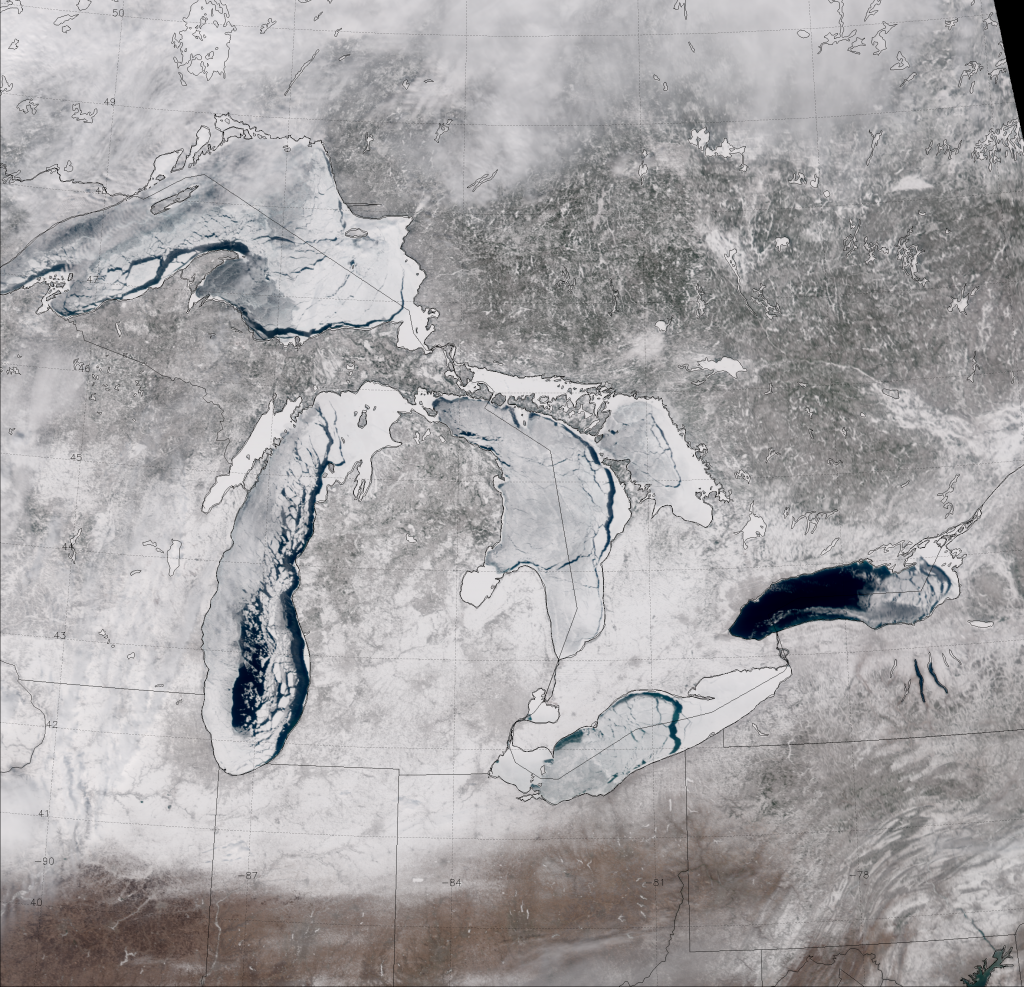Snow and ice on the ground
Snow and ice appears whitish in the VIIRS True Colour RGB images. Fresh, thick snow covering totally the surface appears white. Dirty snow, melting snow appear darker. Ice appears whitish, usually slightly darker than fresh, thick snow cover.
The images below show the snowy Pyrenees and the Caucasus Mountains with a cirrus cloud.

NPP, VIIRS True Colour RGB image for 13 February 2019, 12:43 UTC

NPP, VIIRS True Colour RGB image for 30 October 2018, 10:49 UTC
Snow on lowland and on the Alps are presented by the True Colour and Natural Colour RGB images below. In the True Colour RGB it is much more difficult to detect the low clouds over snowy areas than in the Natural Colour RGBs.

NPP, VIIRS True Colour RGB (top) and Natural Colour RGB (bottom) for 04 February 2018, 12:12 UTC
Cloud-free snowy mountains and lowland usually have different appearance in the satellite imagery. If the snow lies on a plain or low hill, one can often see patches, lines or spots. Patches might be due to forest with shadows and branches not covered by snow. Lines might be due to rivers, and spots (small patches) due to settlements. In mountainous terrain one can often see the structure of the valleys and ridges. Snow on high mountains is usually depicted in a brighter colour than on plains or hills, as there is less vegetation in the mountains to disrupt the snow cover.
In the next image snow on low land and ice on the Great Lakes (border of US and Canada) are seen.

VIIRS True Color RGB for 6 March 2014, 18:35 UTC
(Source: http://rammb.cira.colostate.edu/projects/npp/blog/index.php/2014/02/)
Note that:
• The snow/ice colour depends not only on the snow/ice characteristics but as well as on the solar and satellite viewing directions. Towards the edge of the swath the whitish colour may become saturated white, while along the sub-satellite track it might be slightly darker.
• Thick clouds appear also whitish.
• Thin clouds and large concentration aerosol plume appear greyish.
Explanation of the colour of snow and ice in the True Colour RGB (see the recipe):
The reflectivity value of fresh, thick snow is high (close to 100 %) and about the same in all three visible channels and so it appears (almost) white in the True Colour RGB.
Dirty and/or melting snow may appear greyish, as its reflectivity is lower at the visible wavelengths.
Reflectivity of ice is slightly lower than reflectivity of fresh, thick snow.

